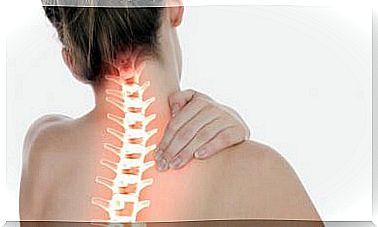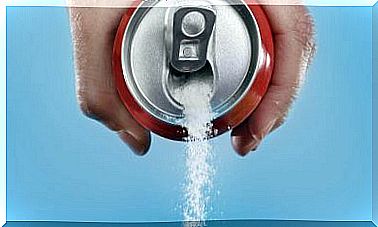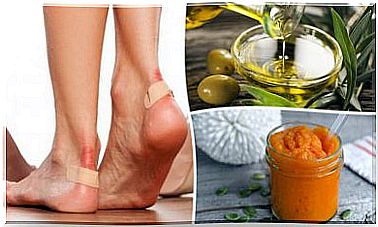6 Things You Should Know About Cradle Cap
Cradle cap is not an allergy, nor is it caused by poor hygiene. It is an aesthetic problem that, with the necessary care, will be kept under control until it disappears.
Cradle cap or infant seborrheic dermatitis is relatively common in children up to three years of age and usually clears up on its own. However, it is normal for parents to feel a certain concern when he makes an appearance. Therefore, in the following lines we explain some questions related to this condition.
Cradle cap
With cradle cap we call a type of seborrheic dermatitis that occurs mainly in infants. It is the appearance of thick yellowish crusts or scales on the scalp area. However, it can appear on other parts of the body.
On the other hand, while some babies present it in very small areas, in others it can appear all over the head, even on the eyebrows or eyelashes.
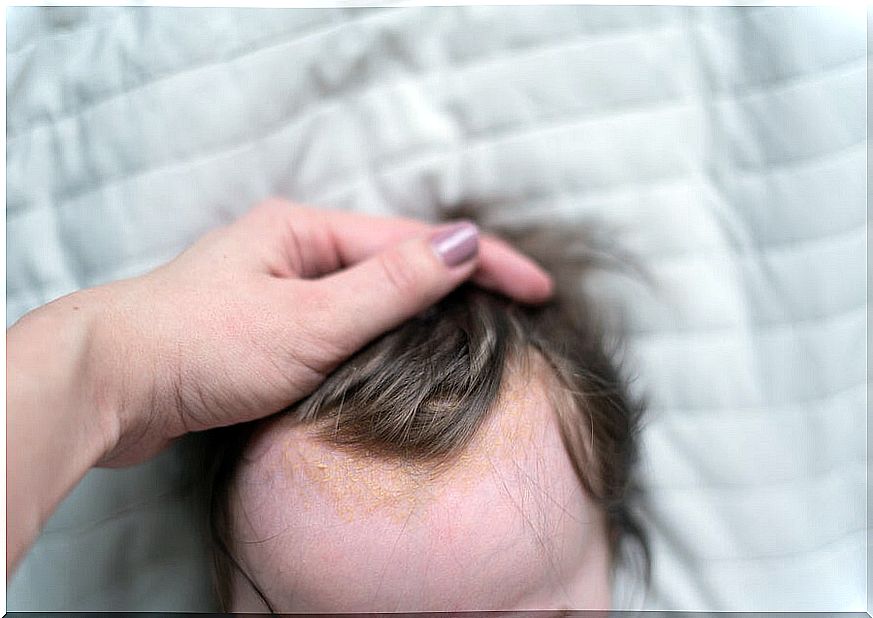
In relation to its causes, the truth is that many are still under study. However, researchers believe that it may be caused by poor fat metabolism by the sebaceous glands.
Also, since seborrhea mainly affects infants and adolescents, perhaps the hormonal factor plays an important role.
In any case, there are also other factors that can increase the probability of developing this condition. Among them, we can highlight extreme climates, oily skin, stress, a weakened immune system, etc.
Here are 4 things to know about cradle cap. These are questions that parents normally ask about this condition. In this way, you can calm yourself down and give it the proper attention and care.
Does it itch or hurt?
Although its appearance may give the sensation of itching or pain, the truth is that cradle cap does not usually cause any of these sensations in the baby. If there is irritation, it may also be due to an infection, but not from the seborrheic dermatitis itself.
In effect, it is only an aesthetic problem that, in most cases, will disappear on its own after a while.
Is cradle cap an allergy?

Traditionally, myths and rumors have linked the appearance of cradle cap with certain food allergies, especially to milk. However, it is precisely a myth.
As we explained above, infant seborrheic dermatitis is not related to allergic reactions, but rather to an excessive production of sebum by the sebaceous glands.
It is contagious?
No, cradle cap is not contagious. It is not an infection of any kind, nor is it caused by bacteria or viruses, so it cannot be transmitted from one person to another.
Also, although in most cases it usually disappears after a few months, some children continue to present it until 2 or 3 years of age. Also, in some cases, it may suddenly reappear after it has disappeared.
Is it due to lack of hygiene?
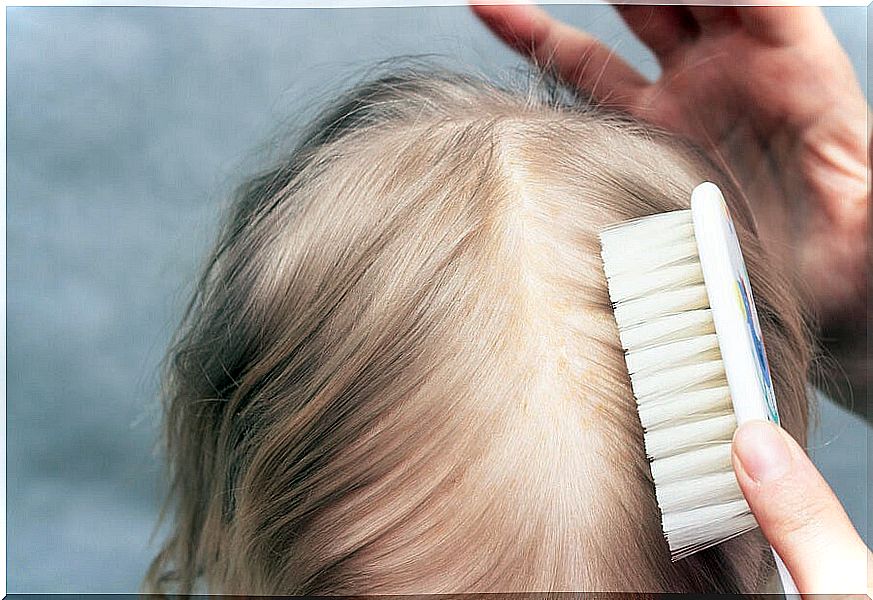
We explained earlier that the exact causes of cradle cap are unknown. However, it is probably due to the excessive production of fat or sebum by the body. Therefore, it is not caused by a lack of hygiene.
On the other hand, once it appears, it is important to maintain certain measures in order to avoid infections. Thus, it is convenient to put gloves on the child if it tends to touch, keep its nails clean and use a comb whose bristles are also clean.
How is cradle cap treated?
In most cases, no specific treatment is necessary. In this sense, the application of olive or almond oil together with a gentle massage in the area of the scales can help to eliminate them. Also, in some cases, it may be necessary to let the oil work for a while, in order to soften them.
In any case, the scales should never be removed by scratching or using combs to pull them out. It is better to let the oils soften them and gradually disappear on their own.
Should I go to the doctor?
It is always important to have the advice of the pediatrician in matters related to the health of infants. For this reason, in the case of cradle cap, at the doctor’s visit it should be indicated so that he can verify that it is this condition and not other types of problems. In addition, the doctor will be able to advise on specific shampoos for babies or what oils to use.
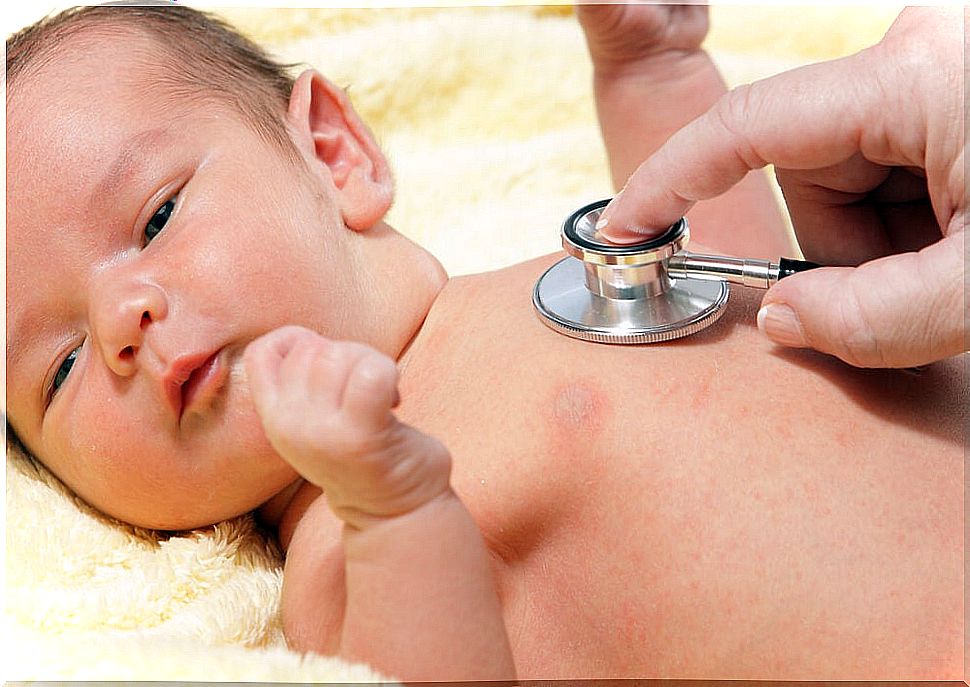
In any case, we must go to the specialist if:
- Cradle cap worsens and spreads to other parts of the body besides the head.
- Seborrhea causes irritation and itching to the baby and hair loss is observed.
- The affected area turns red, is hot, or begins to ooze.
- In addition to seborrhea, the little one has trouble gaining weight.
In short, as you have seen, infant seborrheic dermatitis is not a serious condition. All it takes is some home care and sooner or later it will go away. However, its appearance must be referred to the pediatrician so that, in addition to ruling out other problems, he can professionally indicate how to treat it.





